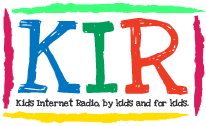
Providing consistent language model
This may appear to be a minor point, however, it is important that all adults use the same terms of literacy when talking about spelling, reading and writing. Inconsistent use of terms confuses children. This manual includes a set of pages (which can be enlarged as charts), provided in the appendix, for adults and children to refer to when working with the surfing sounds dictionary. They are clear and consistent in using terms and language that are important for children’s learning.
Important words describe the key literacy terms that are used throughout surfing sounds dictionary. The chart is provided so that term can be understood and used consistently. Some practical suggestions for using this chart are:
. To encourage other adults to use these terms consistently
. To refer to the chart when working with children to reinforce these
terms
. To encourage children to refer to it when hey use the wrong term
How sounds are made reinforces a total approach to letters and sounds. Children learn in a variety of ways. This chart supports the auditory and visual learning modes by presenting kinesthetic cues of sounds. Suggestions for this charts includes:
. Use it to show children how the four aspects of sound production work together
. Practice saying sounds, focusing on each of the four aspects and referring back to the charts.
. Ask children to make different sounds and explain how each aspect is working.
. Refer to the chart when encouraging children to use these kinesthetic cues for learning the sounds as you work through the dictionary.
Hooks to remember provides a tool for children to personalize their learning. These associations are powerful because they help children to remember. Try the following activities for the chart:
. Ask children if they already use something which helps them to remember a letter name e.g. M is for McDonalds
. Explain that these hooks are good reminders and can be used for all letters
. Work through the charts encouraging children to come up with their own ideas for each letter.
Helper’s, takers and changers present a way of talking about the letters which don’t follow the unusual rules. It uses the terms ‘helpers’, ‘takers’ and ‘changers’ with associated visual cues. The terms are used for dealing with the inconsistent spelling by providing explicit information about these letters. Use the chart to:
. Explain that some letters can make different sounds by helping, taking or changing when used with other letters in words.
. Refer to chart in place of using the word ‘tricky’, e.g. don’t say- “that’s a tricky one
. Encourage children to use the visual cues to assist their memory e.g. “‘h’ is a helper. Remember it’s like the surfboard that helps you catch a wave�
Meet the surfing sounds dictionary introduces the format of the dictionary pages. The organization of the page has been designed to encourage consistency in the use of terms and the language of instruction. The chart helps you to:
. Develop consistency in your talk on each page e.g. “The letter is…. The sound is….�
. Use the same language at other literacy times through out the day.
. Introduce and explain the dictionary to children, working your way through each concept.
